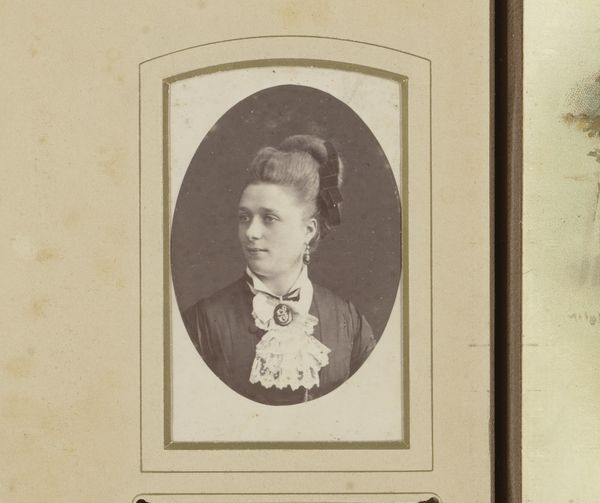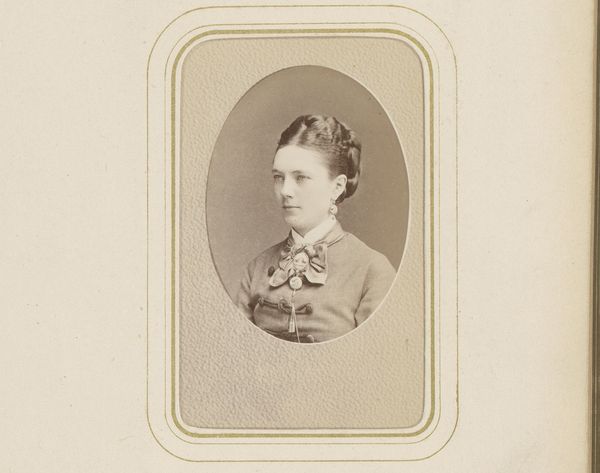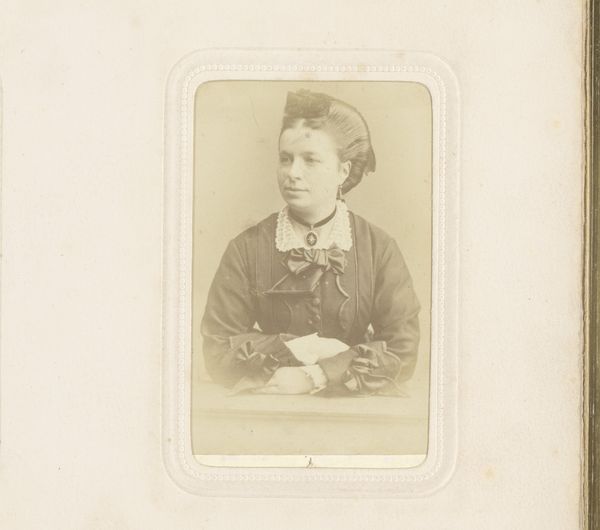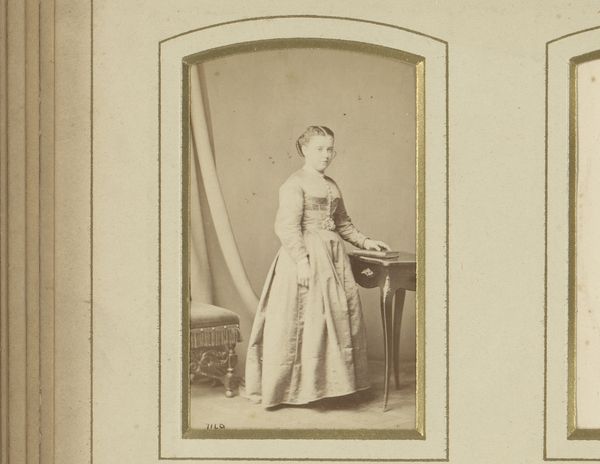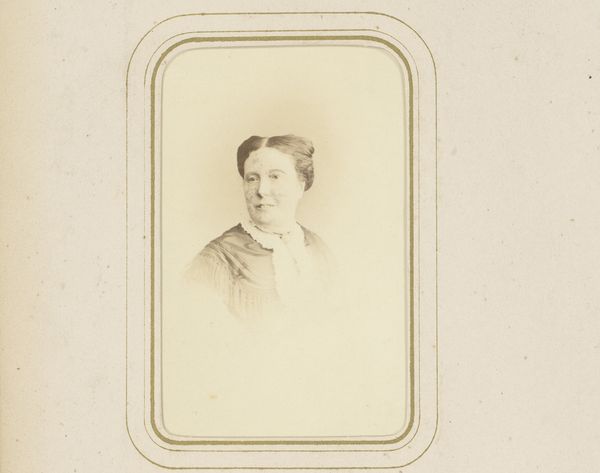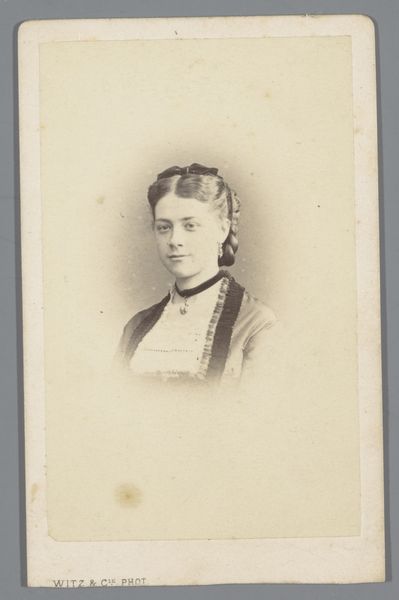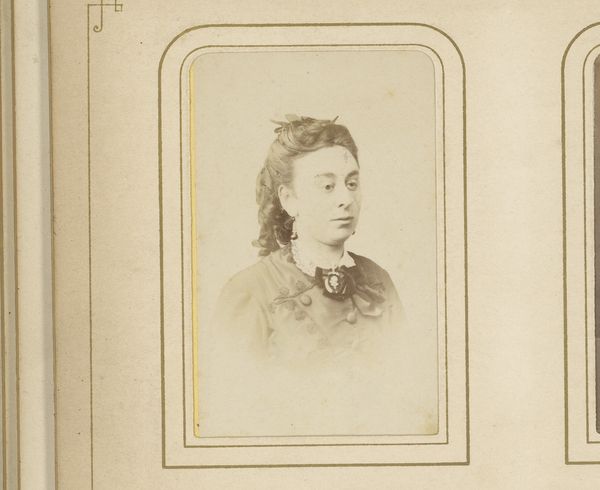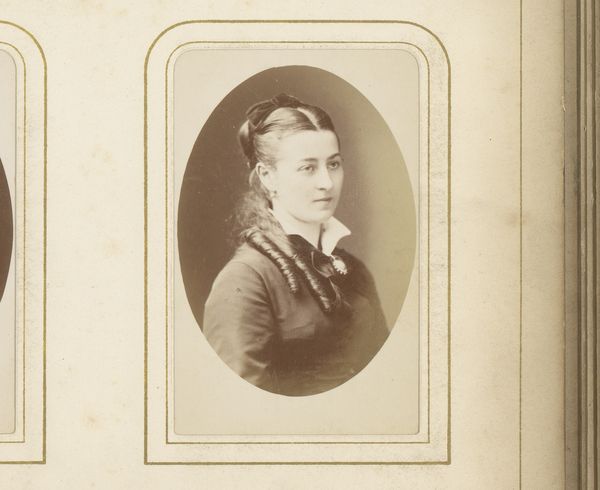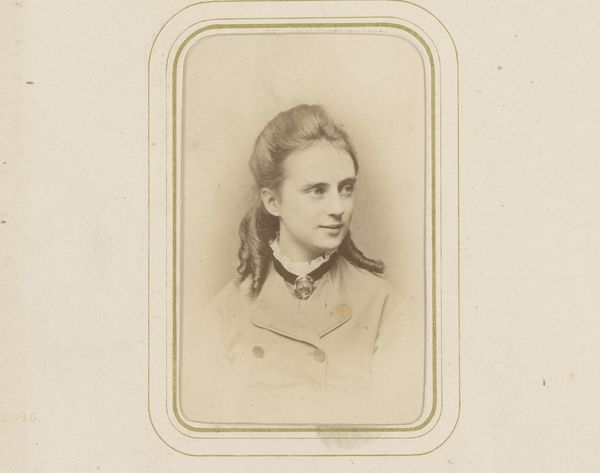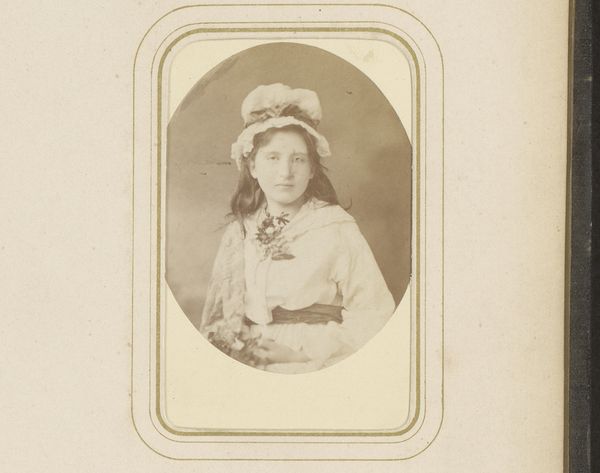
photography
#
portrait
#
photography
#
19th century
Dimensions: height 83 mm, width 52 mm
Copyright: Rijks Museum: Open Domain
Curator: Here we have an example of 19th-century portrait photography: "Portret van een vrouw met halsketting met medaillon" or "Portrait of a woman with a necklace with a medallion" by Walery, dating from 1873 to 1900. Editor: It gives me a solemn, almost melancholic feeling. The subdued sepia tones and oval frame enhance that impression, a kind of quiet intensity is captured in the face. Curator: Absolutely. Note how the oval format and framing contribute to a classic composition, drawing your eye directly to the sitter's features. The soft focus also diffuses light evenly across the subject’s face. Editor: Right, I mean this woman is undoubtedly privileged, based on the adornments like her lace collar and medallion, so, it forces one to consider how class structures are visually reproduced in these sorts of photographs and perhaps were used as social capital. Curator: Certainly, material possessions operate as symbolic devices, signifying status within the prevailing social hierarchies of the late 19th century. We can also examine how this portrait operates formally, as a study of light and shadow, a study in capturing texture and detail—look at how the lace collar interacts against the background of dark dress and neutral backdrop. Editor: But what about the agency of the sitter herself? Is she merely a passive object, meant to simply reproduce a visual display of wealth? What kind of emotional states were even permissible in this historical context, particularly for women? Curator: These are pertinent questions, of course. Although she might not have exerted complete control over the photographic process or its representation, it is worth asking how subtle postural adjustments may challenge or subvert the dominant visual and social narrative. The smallest inclination of her head to the side creates a line, thus setting a tone. Editor: Thanks for guiding us through that exercise; now I see new angles. Curator: Indeed; there's a fascinating duality within the composition itself; I've got a new outlook myself now.
Comments
No comments
Be the first to comment and join the conversation on the ultimate creative platform.
